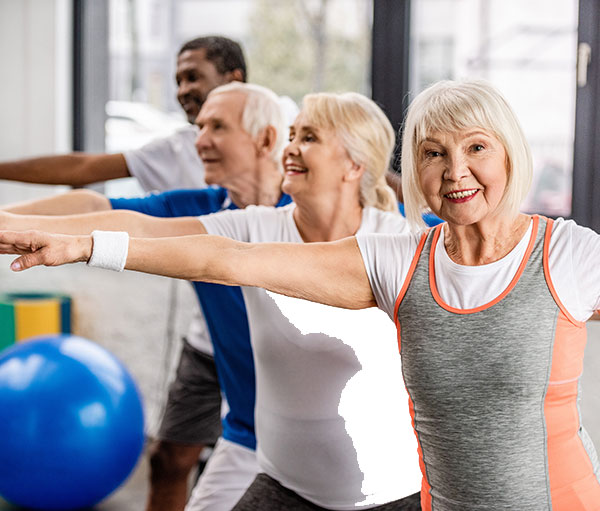Exercise for Bone Health

Osteoporosis is a loss of bone density that can rob us of our independence as we grow older. This condition affects millions of seniors. It weakens the bones and is a major cause of back pain, spinal problems and broken bones—including serious hip fractures.
To an extent, our risk of developing osteoporosis is genetic, but lifestyle factors also come into play. This is a good topic to discuss with younger relatives, because our bone strength is largely determined when we are young. If we eat a diet that’s rich in calcium and with enough vitamin D earlier in life, we’re building stronger bones for our later years. And did you know that young people who get lots of exercise generally have greater peak bone mass? They are saving up more bone for the future, you might say.
At any age, exercise promotes bone health. In honor of May’s National Osteoporosis Month, we’d like to share some information about the ways exercise benefits people who are living with osteoporosis. Many patients are inclined to avoid exercise, fearing that they’ll fall. But in fact, inactivity raises the risk of falling by decreasing our sense of balance, weakening our muscles—and even weakening our bones.
The benefits of exercise for people with osteoporosis are many, but it’s very important to choose activities that are safe and beneficial. Here are four types of exercise the doctor might recommend:
Weight-bearing exercises, such as walking or using an elliptical training machine. These are activities we do while standing up, making our bodies work against gravity. They can actually strengthen the bones—as the National Institutes of Health puts it, “The pull of muscles is a reminder to the cells in your bones that they need to keep the tissue dense.”
Muscle-strengthening exercises, such as lifting weights or using elastic exercise bands. Also called resistance training, these activities can also strengthen our bones, and also our muscles. The stronger our muscles are, the better they can support our bones and help us avoid falling. These exercises also improve our posture.
Stability and balance-improving activities. Osteoporosis raises the risk of a serious fall injury, so fall prevention is important. We can improve our sense of balance and stability with special exercises, such as balance training or tai chi.
Flexibility exercises. Stretching activities, such as certain types of yoga, can also reduce our risk of falling and keep our muscles working well.
In all four of these categories, some activities are safe for people with osteoporosis, while others are not recommended. It’s very important to consult the doctor before beginning an exercise program. Classes should be appropriate for people with osteoporosis. Low-impact exercises such as walking or using an elliptical trainer are generally better than jogging or high-impact aerobics. Certain yoga poses may be unsafe. And of course, activities that often cause falls, such as cycling or skiing, should be avoided. A physical therapist can provide instruction about safe body mechanics during exercise.
This article is not intended to replace the advice of your healthcare provider. Talk to your doctor about managing osteoporosis, and about exercise activities that are safe for you.
Source: IlluminAge

